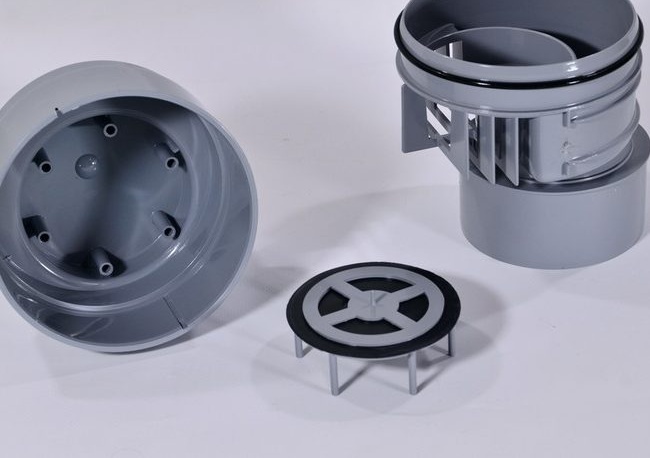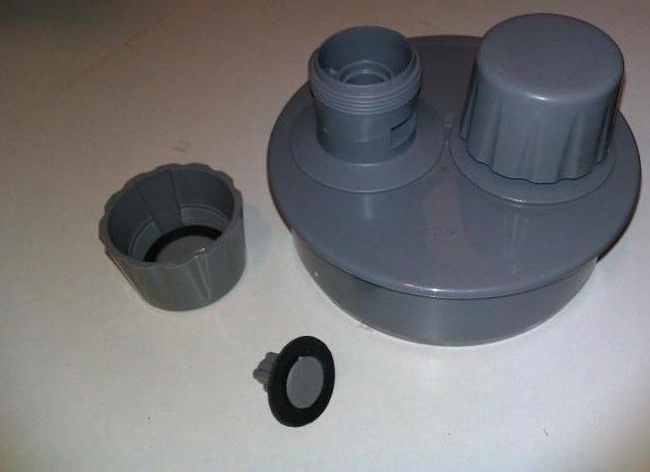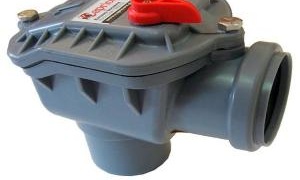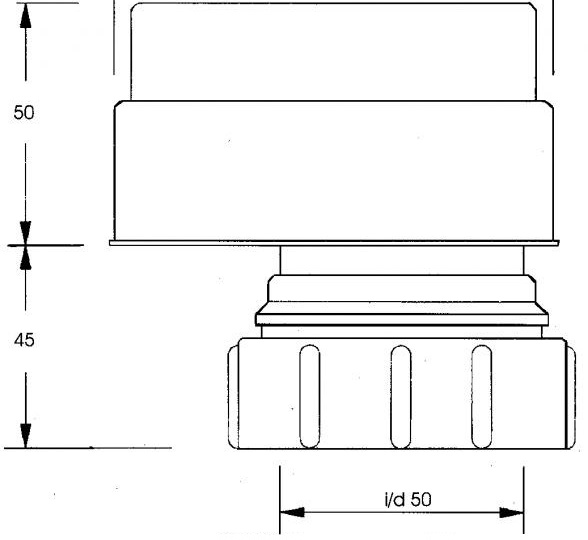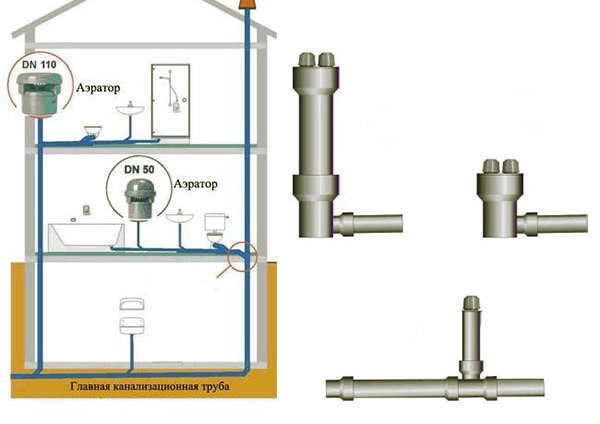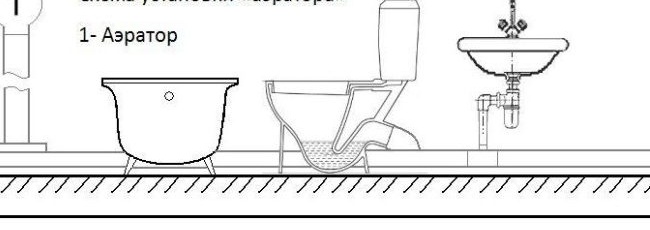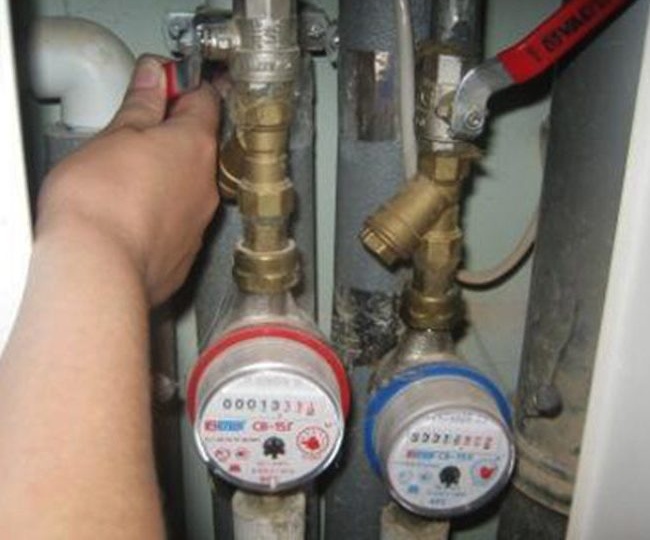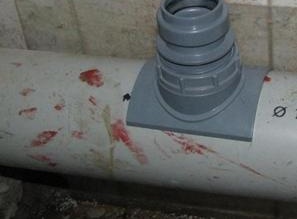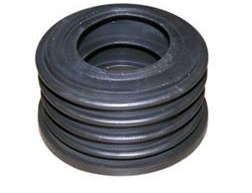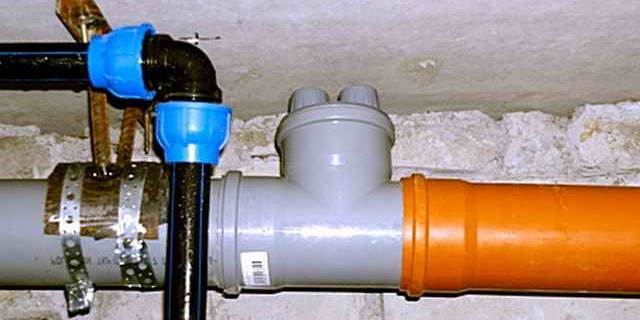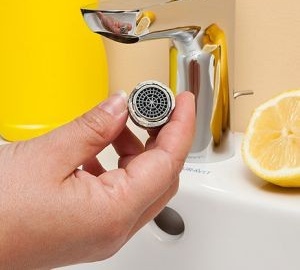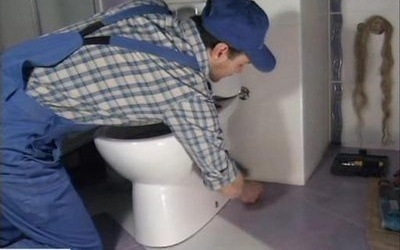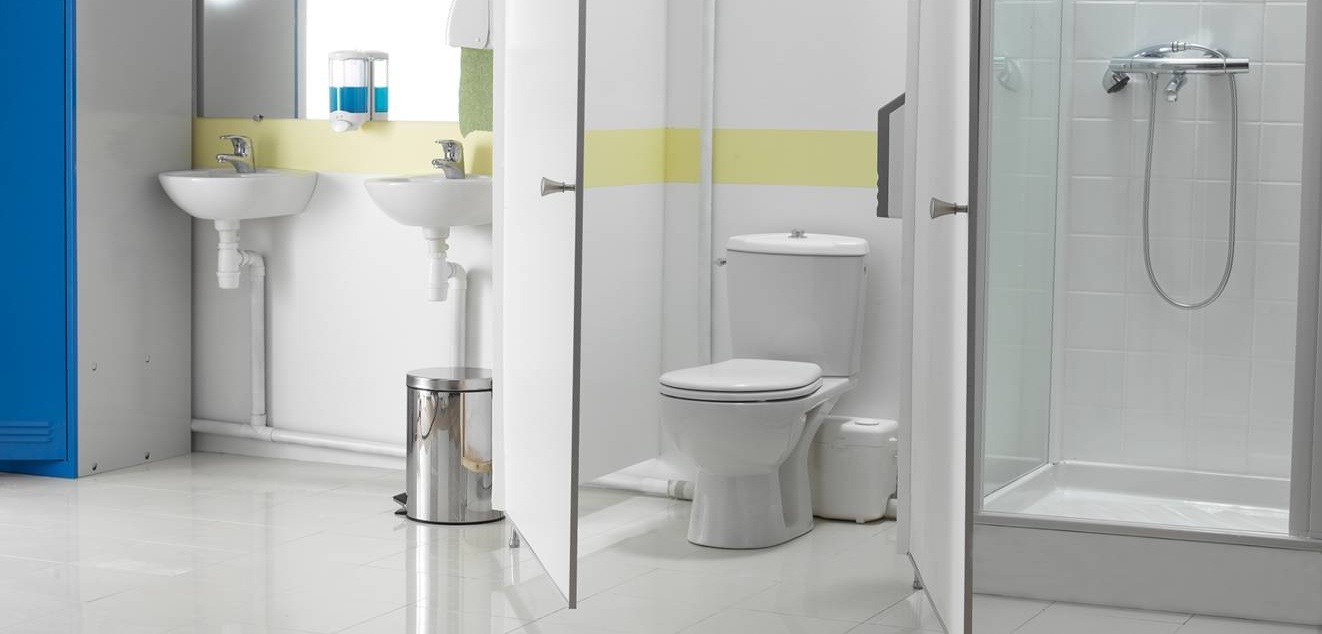How to choose an aerator for sewage and install it yourself
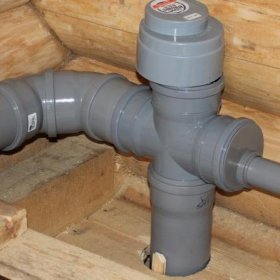
The requirements that apply to the sewage system include the lack of penetration of unpleasant odors into the living room. For this purpose, a traditional sewer aerator is most often used, which very effectively solves the problems of odor distribution and stabilizes the pressure inside the pipeline.
Content
What is an aerator, what is it for?
The aerator installed in the sewer system is a special design unit, through which the pressure inside the pipeline is compensated and regulated.
Such a device is characterized by the fulfillment of two most important functions:
- a special valve element effectively prevents the discharge of sewer gases under conditions of excessive pressure inside the waste system. The device is located at the end points of the drainage circuit, and due to the presence of several such aerators, a low level of pressure is kept in the house;
- the second valve element is intended for air intake from the premises for the sewer riser, due to which it is possible to level the indicators of internal and external pressure. The correct functioning of the device results in the prevention of water intake from the siphon and the organization of a shut-off valve.
The design features, as well as the internal structure of the aerator for sewage, gave such an element a completely logical name - the sewer vacuum valve.
Sewer Valve Design:
- 1 - insert;
- 2 - air channel;
- 3 - case;
- 4 - shutter;
- 5 - hole for ventilation;
- 6 - riser of the sewer system.
Under parameter "A" in the diagram, the general indicators of the area of the air flow calculated in square millimeters are specified.
Types of aerators for sewage
Aeration is the main sewage treatment process carried out by several types of aerators for the sewer system.
- Kinetic or anti-vacuum aerators operate under conditions of low pressure in the pipe system. Designed for braking a significant amount of air when filling the sewer with liquid or in the process of cleaning the pipeline system.
- Automatic designs remove the accumulated air from the sewer pipe system, but the insufficiently high coefficient of efficiency, as a rule, does not contribute at all to the retention of high pressure. This option is most often installed in small households.
- In combined instruments, operability is ensured by combining the functions of the kinematic and automatic design, so that the models have the advantages of two such aerators. Depending on the design features, modern sewer aerators can be represented by tube and disk membrane models.
- The disk design, made of modern and reliable materials resistant to aggressive environments, is installed inside a high-performance septic tank. The modification is characterized by complete tightness, is equipped with special nozzles for pipes and differs in diameter.
- The tubular design in the form of a durable cylinder of sufficient length without the presence of joints has high shockproof qualities, is very resistant to mold and corrosion changes. Such models are characterized by durability and a sufficiently high throughput, which allows extremely evenly perform the distribution of air.
Modifications of modern sewer aerators differ in appearance and special internal structure, but are combined by the principle of action. The produced aerators have different sizes, but a couple of standard sizes of the models currently being manufactured have gained the most popularity:
- Modification with dimensions of 110 mm is mounted on common sewer pipelines with access to the attic space. In the plumbing units of any private homeownership or apartment, modifications are mounted on auxiliary risers. Such a product can have an internal or external installation element, does not need a pipe outlet through the roofing part, has automatic pressure control and does not require mandatory professional installation.
- A modification with a diameter of 50 mm is mandatory installed near each plumbing fixture, if the overall length of the horizontal pipe is large enough or if there are pipe crossings with different diameters. Proper operation is ensured by the horizontal slope of the pipes and installation at the highest point in the pipeline system. Connection is made only to pipes with a small diameter, and installation is carried out after the plumbing fixture located at the very last.
How to choose the right model
There are a number of parameters that should be considered when choosing an aerator:
- orientation of the elements of the sewer system;
- type of device having a membrane, combined, lever, vacuum or cylindrical modification with a rotary or ball mechanism;
- pressure ratings;
- device dimensions
- features of the installation method;
- the material used in the manufacture and its strength characteristics;
- the ability to carry out manual adjustment of the device in the event of a structural failure or breakdown of the water seal.
According to experts, the best option is to purchase a valve system manufactured exclusively by well-known, trusted manufacturers. Only well-established companies produce equipment that runs smoothly and efficiently for a long time. The following brands are popular today:
- German company Ostendorf. Qualitative characteristics of products manufactured by this manufacturer in full compliance with all Russian standards. The production facilities of the German company are located in the Moscow region. All stages of the production of such an aerator for sewerage are strictly controlled by specialists;
- Scottish company McAlline.The products manufactured by this company are characterized by a rather high cost, which is explained by the durability and use of only high-quality, proven raw materials in the production process.
- the Russian manufacturer Politek, whose modern products are quite affordable, and also has proven itself to be reliable, aesthetic and guaranteed long-lasting.
It should be remembered that in any modification of a high-quality aerator, a special unit must be present that effectively prevents the penetration of any rodents from the sewer system into the living room.
DIY sewer valve installation
Self-assembly will require compliance with certain rules:
- installation is carried out in rooms where there are no negative air temperatures;
- the installation room must be well ventilated or ventilated;
- free access to the device will facilitate maintenance during operation and the necessary repairs;
- to ensure vertical tap, a special adapter or additional elbow is inserted;
- installation is allowed not less than 100 mm above the highest drain point of the plumbing device;
- in the presence of drains, the minimum valve height should be approximately 35–40 cm;
- the aerator is installed by means of a threaded connection or in a special socket, which directly depends on the design of the device;
Be sure to pre-determine the organization of the sewer system and choose the diameter of the connected elements.
Below is a standard aerator connection diagram for a sewer system.
The main stages of self-installation of equipment:
- Disconnecting an apartment or suburban home ownership from water supply.
- If necessary, a special adapter or elbow is inserted. The tightness of the joints is checked.
- The aerator is installed using a rubber cuff.
- At the final stage, a trial run is carried out, and if necessary, all joints are additionally sealed or a failed valve is replaced.
Video: how to install and check the aerator
Rules of operation and maintenance
For maintenance of the air valve, its periodic cleaning, as well as visual inspection of the general condition of the sewer device, in the upper part there is a special cover on a convenient thread. Among other things, it is necessary to monitor the tightness of the junction of the lid with the housing, which is ensured by a reliable rubber gasket.
Installation of an air valve is not the most impressive investment in a house or apartment, and also does not need to carry out expensive installation work with the involvement of professionals. Nevertheless, the high efficiency of such a simple device in eliminating sewer odors and stabilizing the pressure in the pipeline, as well as the need for its installation, does not cause even the slightest doubt either among specialists or ordinary citizens.
